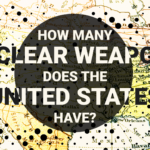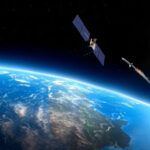Activating a North Korea policy
By John W. Lewis, Robert Carlin | February 10, 2010
It is routine in U.S. foreign policy for a pot not boiling over to be moved to the back burner. Precisely because the North Korean issue is not boiling, however, might offer an all-too-rare chance to make progress with Pyongyang. Over the past several months, the North has signaled publicly and privately that it is in engagement mode. In Washington, arguments abound about whether or not this is a stall tactic or a trick, but we’ll never know if we don’t move ahead with serious and sustained probing of the North’s position. So long as our government sticks to an all-or-nothing approach in terms of Pyongyang, the opportunity to advance vital U.S. security interests in northeast Asia could be lost.
Underlying Washington’s current position are two beliefs, so firmly held that they approach dogma. The first is that we should wait until the situation with North Korea breaks in our favor or sanctions force North Korean leadership to reassess its attachment to nuclear weapons. A year into the Obama administration, this waiting borders on self-imposed paralysis even though North Korea remains capable of badly damaging regional stability as well as U.S. nonproliferation goals. So instead of positively defining and shaping the realities on the ground, we have taken shelter behind fixed positions: enforcing U.N. Security Council sanctions and demanding that the North make progress on denuclearization at the Six-Party Talks. These may be useful parts of an overall policy, but they cannot be effective by themselves and must be handled carefully.
Sanctions will inevitably get in the way of diplomatic progress, and there needs to be a way to use their loosening–as much as their tightening–in support of negotiations. Moreover, Washington’s single-minded insistence that the North return to the Six-Party Talks actually has ceded to Pyongyang a great deal of tactical initiative. There is nothing the North Koreans love more than leaping over our heads to a new position just as we think we have them cornered. As such, in mid-January, they reversed their opposition to talks in the framework of the September 2005 Six-Party joint statement and have proposed that talks proceed on all fronts simultaneously.
The second part of Washington’s dogma is that there is no sense in negotiating with Pyongyang because history shows that agreements with North Korea always fail and the United States ends up snookered. But the idea that our deals with the North have all been useless is based on a flawed reading of the record, a lingering misrepresentation of the accomplishments of the 1994 U.S.-North Korea Agreed Framework. In fact, the utility of that agreement (which lasted from 1994 until 2002) is still evident. Without it, North Korea would have produced far more fissile material and a significantly larger arsenal of nuclear weapons. Two hulking, unfinished North Korean nuclear reactors testify to its lasting legacy.
Reinforcing the belief that we don’t need to, or shouldn’t, pursue an active policy toward North Korea is the Obama administration’s apparent concern that it will be vulnerable to charges of being “weak” if it approaches Pyongyang from anything but the toughest position possible. Thus, on the grounds that the September 2005 joint statement calls for progress on the North’s denuclearization before talks can begin on replacing the 1953 Korean Armistice with permanent peace arrangements, Washington rejected out of hand Pyongyang’s recent proposals to move on both issues simultaneously. We may find it difficult to hold that position because it is neither what the joint statement actually says nor what some of the other parties (especially the Chinese) intended.
The fundamental U.S. goal is exactly right: We want North Korea to denuclearize and to return to the international nuclear nonproliferation regime. But stating the goal isn’t the same as moving closer to it. To do so, we must accomplish things that can help stabilize the situation, make it less likely that the strategic threat from the North will get worse, and begin exploring with Pyongyang a range of ideas for reducing tensions on the Korean Peninsula and in the region. A couple of mid-term steps could include a halt in nuclear testing and long-range ballistic missile launches, along with a complete freeze of the Yongbyon nuclear center, which would involve further decommissioning and a return of international inspectors.
These interim steps won’t “solve” the nuclear problem, but they aren’t beyond what we can accomplish. They will do considerably more to protect our interests and those of our allies than the current all-or-nothing policy, which is going nowhere fast.
Together, we make the world safer.
The Bulletin elevates expert voices above the noise. But as an independent nonprofit organization, our operations depend on the support of readers like you. Help us continue to deliver quality journalism that holds leaders accountable. Your support of our work at any level is important. In return, we promise our coverage will be understandable, influential, vigilant, solution-oriented, and fair-minded. Together we can make a difference.
Topics: Nuclear Weapons, Opinion















